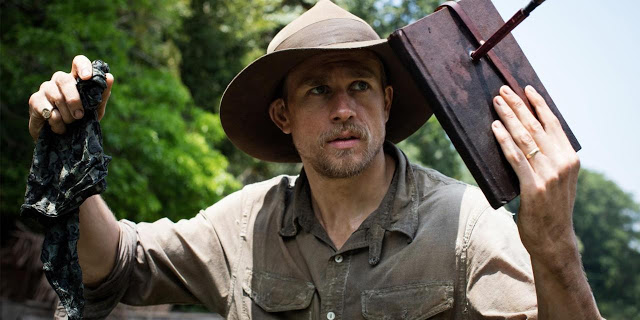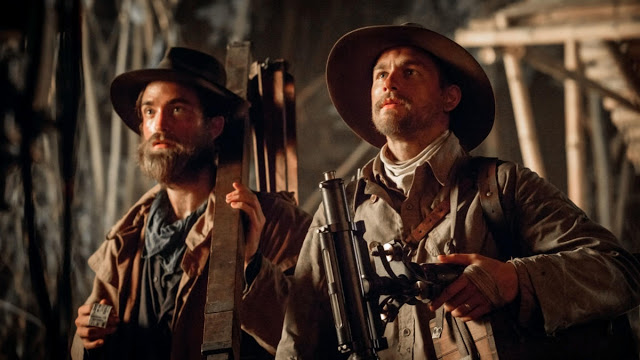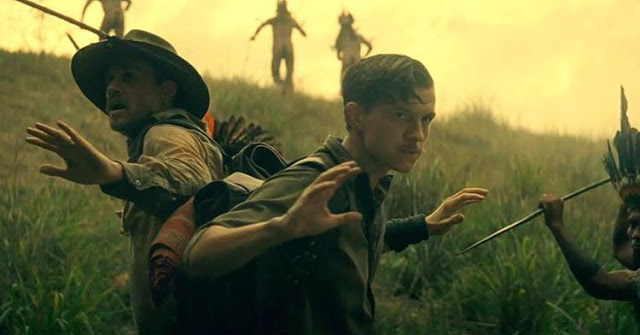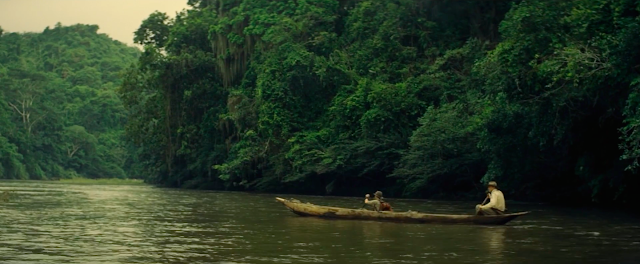The soldier finds the mission underwhelming. Sure, he once trained with the Royal Geographical Society, but that was ages ago, and he barely remembers his studies. Why should he be the one tasked with mapping the border between Brazil and Bolivia? He’s a warrior, not a surveyor. Yet by the end of The Lost City of Z—the grand and grave historical epic from James Gray—the soldier’s reluctance has transformed into obsession. This touching, tragic film chronicles its hero’s gradual descent into something like madness, even as it acknowledges the nobility of his pursuit and the dignity of his character.
For all of the death and misery that it uncovers, The Lost City of Z is not exactly a downer. Gray, once known for his gritty thrillers, has of late developed an odd and interesting talent: He can make human suffering seem strangely beguiling. His Two Lovers put Joaquin Phoenix through the emotional wringer, but it also recognized the thrill of newfound romantic attraction. And while The Immigrant essayed the challenges facing Marion Cotillard’s woebegone traveler with unflinching directness, Gray’s lustrous craft shaded her predicament with tenderness and hope. Now with The Lost City of Z, he examines the ecstasy and the agony of mania—the fanatical need to prove yourself, no matter the mortal cost.
The solider is Percy Fawcett (Charlie Hunnam), a capable but undistinguished army captain who is blessed with martial skill but is cursed with a disreputable family name. (Gray, who adapted his screenplay from a book by New Yorker writer David Grann, wisely spends minimal time alluding to the misdeeds of Fawcett’s degenerate father.) He longs to earn medals in the field, so when the RGS approaches him with the assignment of a surveying expedition, he’s less than thrilled. Still, he’s a loyal patriot with a stiff upper lip, and so he dutifully ventures across the Atlantic for the rainforest of Amazonia (in a touch of serendipity, the film has been distributed by Amazon Studios), accompanied by Henry Costin (a very fine Robert Pattinson), his aide-de-camp who’s more flinty than he looks.
Ah, the adventure picture! The jungle, the mosquitoes, the beards. The Lost City of Z roughly splits its time between the refined pageantry of Britain and the pitiless heat of South America (filming took place in Colombia), and it isn’t difficult to pick which location is more stimulating. In many ways, Gray is making a throwback historical epic in the vein of The Bridge on the River Kwai; even if you ignore its sensitive approach to character, The Lost City of Z can be admired for its robust depiction of manly escapades. With jolts of energy and excitement, it illustrates the enormous practical challenges that attend such an expedition: the uncompromising weather, the fierce river currents, the dwindling rations, the fever and disease. And that says nothing of the moment when a hail of arrows suddenly greets Fawcett’s brigade, as a band of natives announce their distaste for his arrival with—to quote another jungle epic—extreme prejudice.
Speaking of prejudice, I am sure that some will perceive this movie to be a variation on the white-savior narrative, a tale of modern culture and intellect colliding against antediluvian savagery. Yet Gray takes pains to defy that stereotype, painting Fawcett not as a brutish conquistador but as an archaeologically ravenous explorer. At the end of his first voyage, he unearths a number of sophisticated artifacts, convincing him that Amazonia once hosted an advanced civilization. From that point forward, discovering proof of its existence will become his life’s work.
This personal metamorphosis—from compliant company man to fixated history buff—is rather sudden. Perhaps too sudden. It is the linchpin that the remainder of the movie turns on; given that, Gray might have devoted more time to it than a rushed scene in which Fawcett finds a few chiseled stones buried in the ground. But if you can accept Fawcett’s swelling interest in antiquity (on this point, Hunnam’s committed performance is suitably convincing), then The Lost City of Z becomes a gripping, multi-faceted study of blind zeal and its many consequences.
Those include the ramifications for his family, and here the film is not quite as impactful as it seeks to be. Gray strives to turn Fawcett’s wife, Nina (Sienna Miller), into a three-dimensional figure; she locates documentary evidence that helps give credence to his claim, and when he informs her of his intent to return to Amazonia, she disapproves not because he’s leaving but because he refuses to bring her along. Ultimately, though, Nina comes across as little more than the token supportive spouse, cheering on her husband while fearing for his safety. Similarly, and despite a characteristically nuanced portrayal from Tom Holland, Fawcett’s eldest son, Jack—who accompanies his father on his final journey into the jungle—lacks real definition, pinballing from seething resentment of his father to reverent idolatry.
Gray proves far more successful in articulating the thorny dynamics between Fawcett and his crew. He and Costin develop a camaraderie of mutual respect, the latter providing temperance and wisdom that nicely complement the former’s undiluted vigor. But the more compelling relationship is between Fawcett and James Murray (Angus Macfadyen, forever Braveheart’s Robert the Bruce), the aristocrat who takes a keen interest in Fawcett’s story and chooses to fund his second campaign. Murray’s capital grants him a spot in Fawcett’s party, but while his enthusiasm is equal to Fawcett’s, his fortitude proves less impressive. The most suspenseful scenes in the film involve the tension between Fawcett’s relentless fervor and Murray’s mounting panic, as the clash of their headstrong personalities threatens their odds not just of success, but of survival.
The Lost City of Z is invigorating entertainment, a product of accomplished technique and thoughtful plotting. (Darius Khondji’s lithe cinematography is especially noteworthy.) Yet the movie is more striking for its persistent empathy. Gray does not shy away from Fawcett’s narcissism, but he presents it in a manner that is curiously non-judgmental. This allows Fawcett to acquire an element of decency that is somehow consistent with his escalating obsession. When he softly instructs a battalion of artillerymen, “Let us fight for each other,” you can tell that he really means it. His quest has grown to define his life, but it has not entirely subsumed his soul.
That sense of poignancy has perhaps become Gray’s defining trait as a filmmaker. Or maybe it’s his flair for memorable endings—following the stunning last scene of The Immigrant, here he again confirms his gift for composing magnificent final shots. He closes The Lost City of Z with an image of fantastical beauty, an elegiac fusion of two worlds that reminds you, with devastating gentleness, that the city is not all that has been lost.
Jeremy Beck is the editor-in-chief of MovieManifesto. He watches more movies and television than he probably should.




